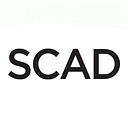Petra Richterova named Schomburg Fellow
Petra Richterová is ready to rumba.
The Schomburg Center for Research in Black Culture in Harlem has named SCAD professor of art history Dr. Petra Richterová as one of 12 exceptionally talented Scholars-in-Residence in its 2021–2022 cohort. This fellowship will facilitate the completion of Dr. Richterová’s scholarly book project “Rumba: A Philosophy of Motion,” illustrated with over 100 original photographs taken by the author in Cuba and the U.S. from 2001 until today. She will begin her six-month residency at the Schomburg Center in September of this year, before returning to teach at SCAD in 2022.
“My book project explores Cuban rumba, a unique Afro-Cuban dance and music complex that represents the foundation of contemporary Cuban popular culture,” says Richterova, who holds her doctorate in the history of art from Yale, where she studied under renowned Afrocentric historian Robert Farris Thompson. “As a Schomburg Fellow, I’ll research parallel performance and visual art traditions in north, west, and central Africa. I’ll study the Schomburg holdings, and look at historical and theoretical considerations and the latest scholarship in the field and really dig in.”
As a Scholars-in-Residence Fellow, Richterová will have access to the research collections and resources of the Schomburg Center, the preeminent repository for materials related to the history and cultures of peoples of African descent. “As the Schomburg moves prudently toward reopening its full range of resources and programs to the public, we are thrilled to welcome this new class of Fellows,” said Brent Hayes Edwards, Director of the Scholars-in-Residence program.
“The work I’m doing is interdisciplinary and deals with many different cultures,” Richterová explains. “I’m examining the African roots of the rumba complex from the perspective of dance. My research will focus on Afro-Cuban ethnomusicology, gesture in African art, and traditional African dance. The project is anchored in my Spanish fluency and twenty years of fieldwork in Cuba, including three full years of living in Havana. I am also proficient in French, which will be essential to reading Francophone literature on African dance and art. Specifically, I’ll be looking at Sahara’s Imazighen [Berber] peoples, Nigeria’s Yoruba [Lucumí], Efik/Efut [Carabalí], Dahomey [Arará], Kongo civilizations, Mali’s Mande populations as well as the Banta of Liberia and Sierra Leone [collectively known as Gangá in Cuba].”
A widely published Africanist whose classes at SCAD, highly popular among students, include Art and Spirituality (ARTH 342) and Dancing the Diaspora: Critical Approaches to African and Afro-Atlantic Art (ARTH 796), Richterová is also an acclaimed director, cinematographer, and photographer. As a Scholars-in-Residence Fellow, Richterová will receive a stipend and the use of a private office at the Scholars Center at the Schomburg Center in Harlem.
She views the work that will be facilitated by her Schomburg Fellowship as wide-ranging. “Digitization of research tools has made it possible to create an ultimate product from the project, with various interfaces, and I’m hoping after I complete my book to make a documentary,” she says.
Banner (color) photo and black-and-white photo (above) by Jose Sandoval, taken in Havana, shows Dr. Petra Richterová with one of Cuba’s greatest rumba dancers, Bárbaro Ramos Aldazábal, principal dancer of the legendary rumba ensemble, Los Muñequitos de Matanzas.
